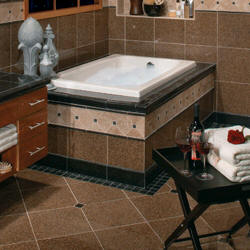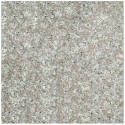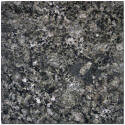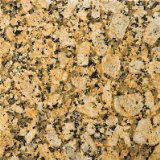What are Granite tiles?
Granite floor and wall tiles as shown in Figure 1, are quite literally, as old as the earth. They are formed from liquid magma, the molten rock still found at the core of the planet, which is pushed toward the surface to form a substance approaching the hardness and durability of diamond.

Figure 1 - Granite floor and wall tile, installed
Granite is an igneous rock, the name reflecting its fiery beginnings. The chemical composition of granite is similar to that of lava. However, granite owes its hardness and density to the fact that it has been solidified deep within the earth, under extreme pressure. Over the eons, seismic activity has changed the crust of the planet, forcing veins of granite to the surface. Glaciers scraped off layers of dirt, sand and rock to expose granite formations. Typically revealed by outcrops, these deposits have been discovered on every continent.
Quarrying and Fabrication:
Granite has been quarried systematically as far back as 4000 B.C.--long before hardened metals were used. Over the centuries, quarrying techniques evolved very slowly until the 20th Century when industrial techniques allowed large quantities of stone to be quarried in a cost effective manner. Low-compression explosives and drive-in quarrying methods are used to remove large blocks of granite from deposits close to the earth's surface. The granite blocks are then shipped from the quarry by truck or rail to a fabrication facility where they are sawn into slabs of the desired thickness. Each slab is then processed through automatic equipment for the required finish application.
Due to the extreme hardness of granite, much of the fabrication process requires the use of diamond-edge saw blades or a slurry containing a metallic abrasive which contributes significantly to the cost of the finished product. However, recent advances in quarrying and fabrication processes have allowed manufacturers to offer many granites at prices equivalent to, and in some cases, less than man-made granite look-a likes and solid surface materials.
Design Characteristics:
Granite is the hardest of all building stones with a very dense grain, making it virtually impervious and uniquely applicable for any interior use. If polished, its high-gloss finish will endure even in harsh environments. These characteristics are ideal for countertops and flooring, making granite a reliable stone for these applications.
The most popular size of granite for domestic applications is 305 x 305 x 10mm. These tiles usually have an Arrised (bevel) edge and are available in a wide selection of colors. Prices depend on the type of Granite certain types are difficult to extract thus the price is higher than the more common types. It's a fact however the more attractive the material the more expensive it becomes.
Internal Use:
The use of Granite is almost limitless from a kitchen counter top to floors and walls offering an elegant and practical solution to many design issues.
Selection Of Granite Tiles

Java granite floor tile

Green Diamond granite floor

Chestnut granite floor tile

Giallo granite floor tile
Cutting Granite Tile:
Granite tile can only be cut using a diamond blade that is continuously lubricated with water - wet saw. Wet saws can be purchased or rented from most tool rental facilities.
Selection of wet saws.

MK Diamond 157222 MK-170 1/2 Horsepower 7-Inch Bench Wet Tile Saw

Northern Industrial Wet Tile Saw - 7in. Blade Size

